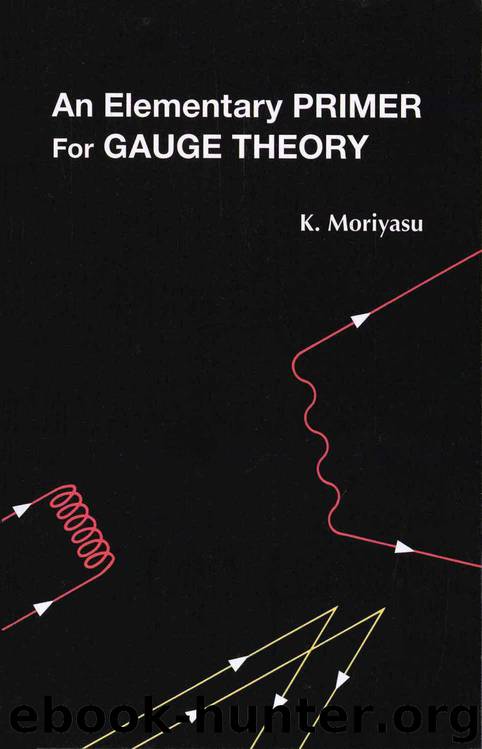An Elementary Primer for Gauge Theory by K. Moriyasu

Author:K. Moriyasu [Moriyasu, K.]
Language: eng
Format: epub
Publisher: World Scientific Publishing
Published: 0101-01-01T00:00:00+00:00
CHAPTER VII
THE BREAKING OF GAUGE SYMMETRY
Jean Buriclan (AD 1300 - 1350) S. Fubini, 19741
7.1 Introduction
In the preceding chapters, we have discussed the properties of gauge theories which were always assumed to be exactly gauge invariant. However, we know from experience that gauge symmetry is more often broken than not in real physical systems. The original Yang-Mills gauge theory of isotopic spin was unsuitable for describing the strong nuclear force because it could not produce the necessary short-range interaction without explicitly violating gauge symmetry. This left electromagnetism as the only well understood gauge theory which agreed exactly with the known experimental facts. Thus, a major obstacle in the further development of gauge theories was the need to understand how a physical system can be described by a gauge theory and at the same time have properties which appear to violate gauge invariance.
The principle difficulty in understanding gauge symmetry breaking is that the most obvious symptoms are not directly related to any apparent source. In elementary particle physics, gauge symmetry breaking manifests itself through the short range of the interaction. The gauge field which mediates the interaction has a non-zero mass. The extremely short ranges of the weak and strong nuclear forces indicate that the masses involved are very large. Thus, in order to understand symmetry breaking for the fundamental forces, one has also to understand how a gauge field with no mass can acquire a very large mass. The situation is further complicated by the fact that the internal quantum numbers such as isotopic spin are usually conserved by the interaction. This means that the Lagrangian describing the system is still manifestly gauge invariant even though the gauge field appears to violate gauge symmetry.
Download
This site does not store any files on its server. We only index and link to content provided by other sites. Please contact the content providers to delete copyright contents if any and email us, we'll remove relevant links or contents immediately.
| Atomic & Nuclear Physics | Particle Physics |
The Complete Stick Figure Physics Tutorials by Allen Sarah(6638)
Secrets of Antigravity Propulsion: Tesla, UFOs, and Classified Aerospace Technology by Ph.D. Paul A. Laviolette(3450)
Thing Explainer by Randall Munroe(3327)
The River of Consciousness by Oliver Sacks(2992)
The Order of Time by Carlo Rovelli(2714)
I Live in the Future & Here's How It Works by Nick Bilton(2524)
How To by Randall Munroe(2475)
A Brief History of Time by Stephen Hawking(2473)
The Great Unknown by Marcus du Sautoy(2186)
What If?: Serious Scientific Answers to Absurd Hypothetical Questions by Randall Munroe(2170)
Blockchain: Ultimate Step By Step Guide To Understanding Blockchain Technology, Bitcoin Creation, and the future of Money (Novice to Expert) by Keizer Söze(2137)
Midnight in Chernobyl by Adam Higginbotham(2078)
Networks: An Introduction by Newman Mark(1998)
The Meaning of it All by Richard Feynman(1909)
Easy Electronics by Charles Platt(1864)
The Tao of Physics by Fritjof Capra(1848)
When by Daniel H Pink(1777)
Midnight in Chernobyl: The Untold Story of the World's Greatest Nuclear Disaster by Adam Higginbotham(1775)
Introducing Relativity by Bruce Bassett(1754)
